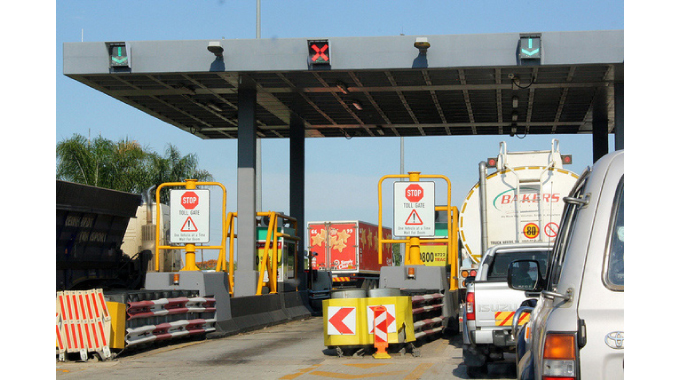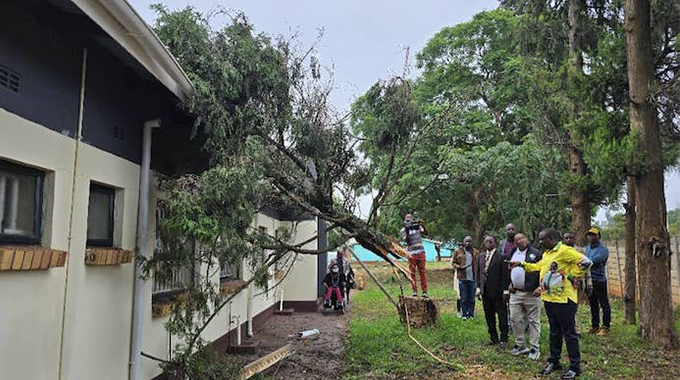Dirt, chaos and decay: Bulawayo a pale shadow of its former self

Mashudu Netsianda, Deputy News Editor
IN the years gone by, Bulawayo, with its charming architecture in the form of Victorian-style buildings, stood tall across the country as a better-organised and cleanest city in southern Africa.
From a reliable garbage collection schedule to public lighting and traffic lights maintenance, the City of Kings and Queens remained a city to reckon with.
With its clean tree-lined boulevards, recreational parks filled with plants and flowers and charming architecture, Zimbabwe’s second largest city was the country’s smartest metropolis and a marvel to both visitors and residents.
Historically, Bulawayo has been the country’s principal industrial centre with its factories producing car accessories, building materials, electronic products, textiles, furniture and food products.
The city is also the hub of the country’s rail network and the headquarters of the National Railways of Zimbabwe (NRZ).

Sadly, today, Bulawayo is a pale shadow of its former self and a decaying eyesore. The city’s dirty and crowded streets and unmanicured landscapes are no longer a delightful way to pass a few hours.
The city now resembles a beautiful space that history has all but forgotten.
On some roads such as 6th Avenue Extension and Herbert Chitepo Street from 5th Avenue to 11th Avenue, driving during the peak hour has become nightmarish as rowdy kombi crews violate road rules causing congestion.
The streets have become no-go areas for ordinary motorists as kombi crews have turned them into mini ranks.
The ubiquitous vendors have virtually occupied all the available space creating chaotic scenes, especially along 5th Avenue between Joshua Mqabuko Nkomo and Jason Moyo Streets.
The chaos obtaining in the city centre has partially been blamed on the delays in the redevelopment of Basch Street Terminus which has been closed for some time now.
Central and Centenary Parks along Leopold Takawira Avenue Extension, which were once the epicentre of entertainment and relaxation in Bulawayo with scenic views and lush lawns for people to unwind during their spare time, are now an eyesore. The recreational parks were once the epitome of the picturesque pride of the city.
The ponds that once swelled with fish have run dry and the duck enclosure now has an unendurable stench.
When the Chronicle news crew visited the park yesterday, there were derelict structures such as chairs and tables. The ceiling at the tuck shop is almost collapsing while litter is strewn all over the place, from fast food cardboard boxes, empty alcohol and soft drink bottles.
The once lush green lawn that covered the area is a thing of the past with the place looking parched and unkempt. The park’s famed fountain, once an attraction for photo shoots, has turned into a motionless and murky body of water harbouring mosquitoes.
An abandoned train track with missing rails and a duck pond whose distinguishing feature is the smell of urine emanating from it now seem like landmarks of a city’s long-forgotten past.
Central and Centenary Parks have been turned into illegal pick-up points by operators of long-distance buses that ply the Bulawayo-Beitbridge and Bulawayo-Harare roads.
This has resulted in the two recreational parks losing their allure due to the violation of the city’s by-laws. Daily, crews of bus companies that include CAG, Joma, Inter Africa, Farwest park their buses along Leopold Takawira Extension opposite Centenary Park touting for passengers.
This comes as the Bulawayo City Council (BCC) seems to be fighting a losing battle in dealing with the errant bus crews who are resisting moving to Renkini Bus Terminus where they are expected to pick up passengers.
Along Leopold Takawira Avenue Extension, buses used to park adjacent to Eveline High School but the local authority has since placed bins and ropes preventing the bus crews from parking there.
Instead of returning to Renkini Bus Terminus, the defiant bus crews moved further down the street and now park their buses near the Bulawayo Theatre going to the Museum.
The activities of the illegal bus operators have even attracted vendors who in turn, litter around Central and Centenary Parks.
The city council is struggling to collect refuse in both residential and commercial areas resulting in illegal dumping of waste in open spaces and sanitary lanes. As a result of BCC’s failure to collect refuse, residents have resorted to dumping garbage in undesignated areas, forming breeding grounds for diseases and vermin.
The homeless are also taking advantage of the sanitary lanes that are not closed off to the public in the city centre to use them as toilets. The lanes are also being abused by street kids who burn garbage and use them as sleeping areas.
A symphony of street lights, which used to illuminate the city’s night skyline upon arrival in Bulawayo along Leopold Takawira is now a thing of the past. The development of glittering skyscrapers and high-rise residential buildings has since stopped.

Town planning expert and National University of Science and Technology (Nust) lecturer, Mr Tafara Madyangove said for Bulawayo to regain its former status, it should identify resources within its jurisdiction that may give the city a competitive advantage. Mr Madyangove said towns and cities in Zimbabwe should revert to what is referred to as urban management.
“Bulawayo was the industrial hub while Harare was an administrative city,” he said.
“However, what is happening right now is that all towns and cities in Zimbabwe are decaying in terms of the economy save for Harare, which is growing exponentially.”
Mr Madyangove said every city that maximises its comparative advantage can be competitive thereby attracting capital and additional development.
“For instance, while street vending has become one of the major sources of income, it needs to be organised. Mind you this business thrives where there is a hive of pedestrian traffic,” he said.
Mr Madyangove said Bulawayo should create pedestrian corridors to help regenerate its economy, which in turn creates revenue streams for both Central Government and local authority through taxes.
“Most of the cities in Zimbabwe were developed using the sector model, which can be infused with transit-oriented development. Most of our developments are along major transport communication,” he said.
Mr Madyangove said the smart city concept proclaimed by President Mnangagwa is another way in which cities can change through reducing distance travelled.
“The smart city concept thrives on three anchors which are the compact city, infrastructure development and sustainable development. Once a city can leverage its comparative advantage, it can survive,” he said.
“A compact city is where there is reduced travel by having everything in one building hence there won’t be any need for transport thus reducing unnecessary errands. We also need to reconfigure and bring in the aspect of smartness so that we reduce congestion in cities and distances travelled so that people get services more efficiently.”
Acting Bulawayo Town Clerk Mrs Sikhangele Zhou attributed the decay of the city to the economic challenges coupled with the collapse of industry. “It is true that Bulawayo used to be the cleanest and most organised city back then before we started witnessing the closure of industries resulting in people who lost their jobs resorting to street vending. We, however, need to regulate these activities, which is why we normally encounter running battles with violators of council by-laws,” she said.












Comments